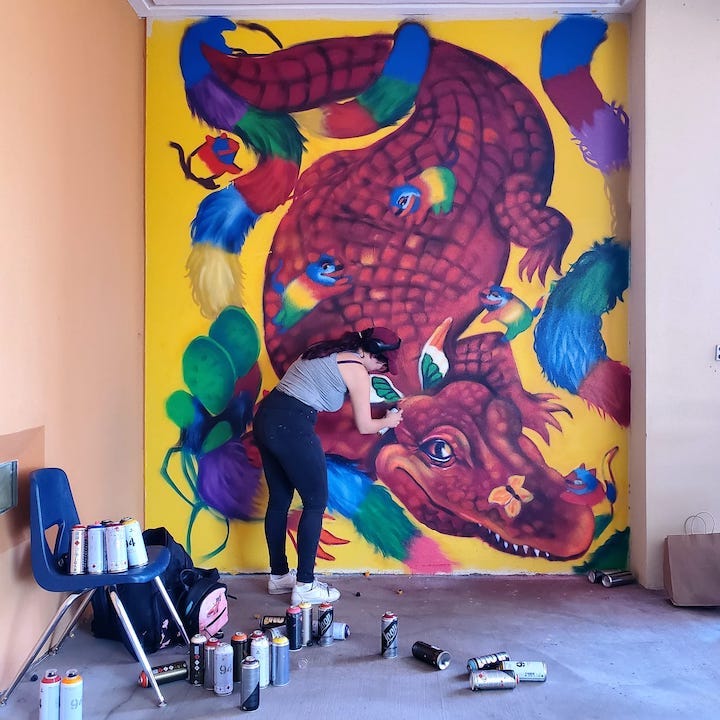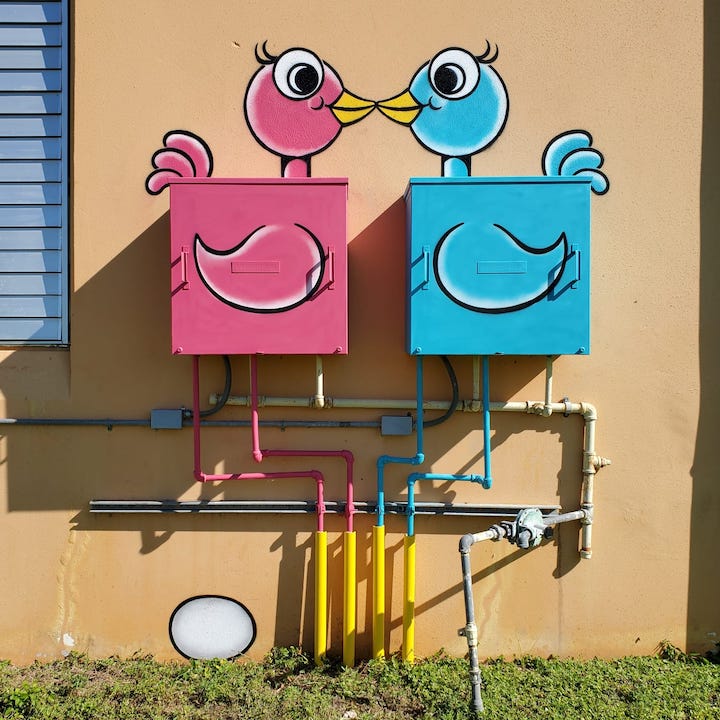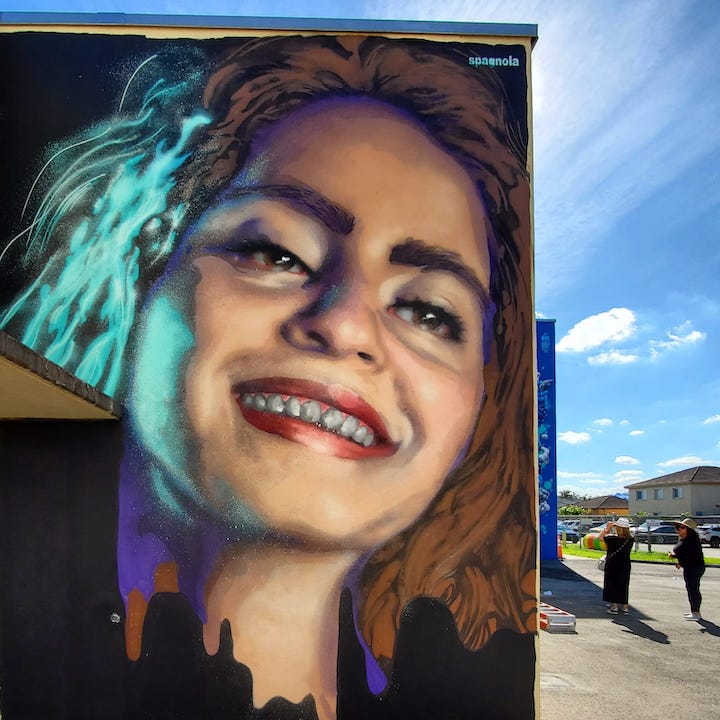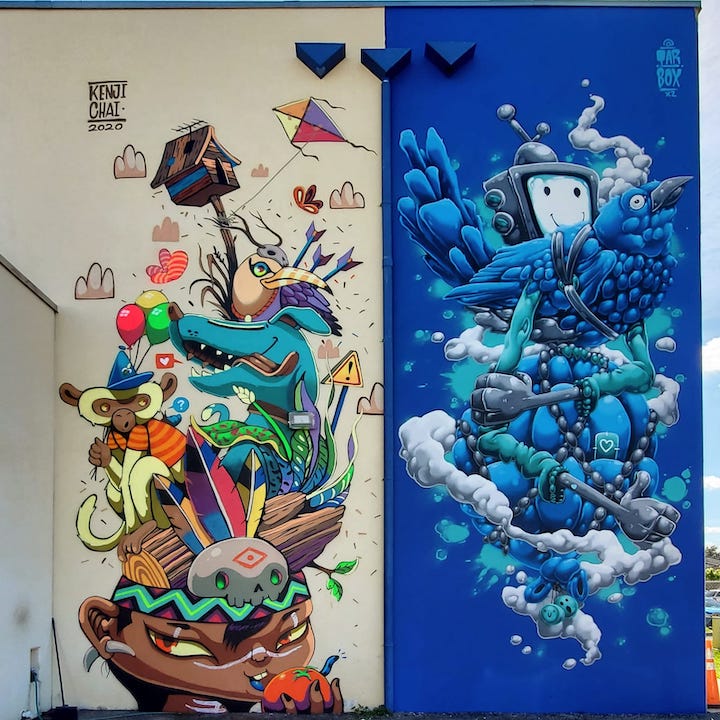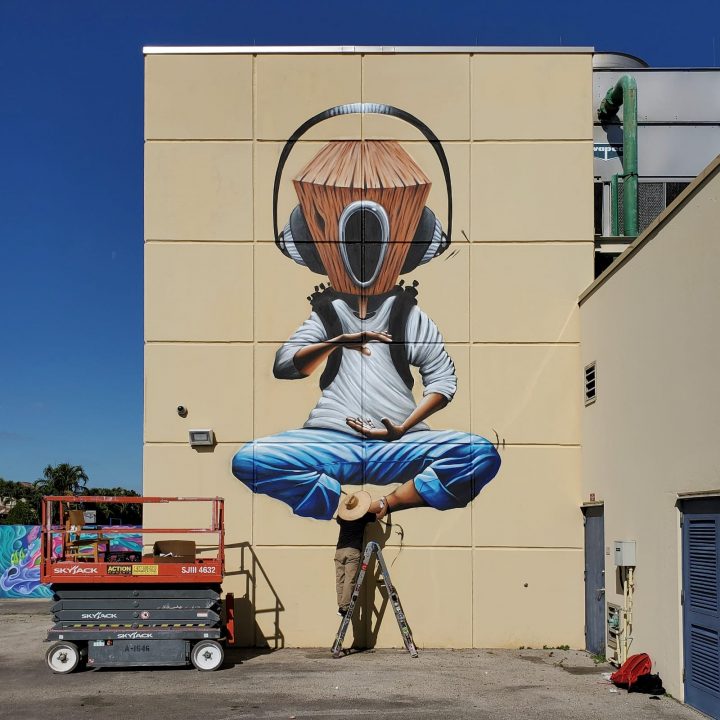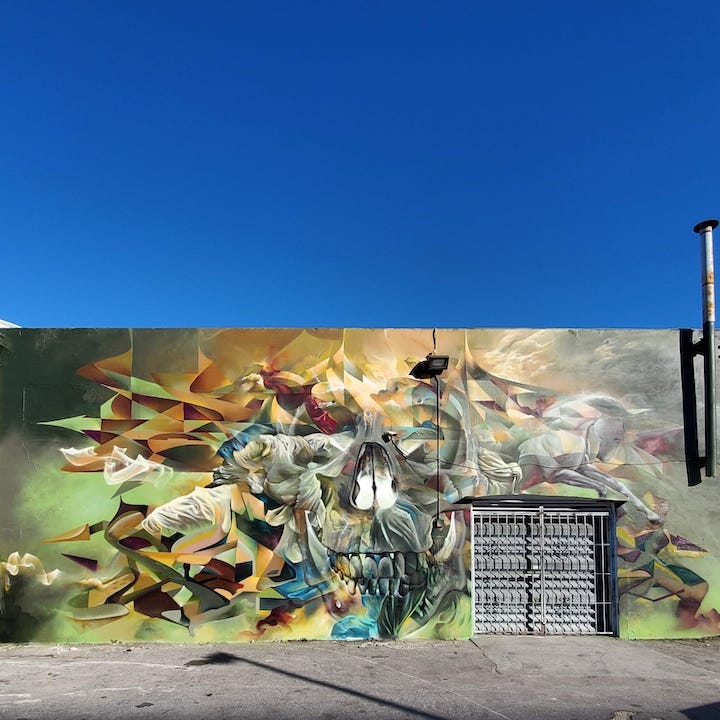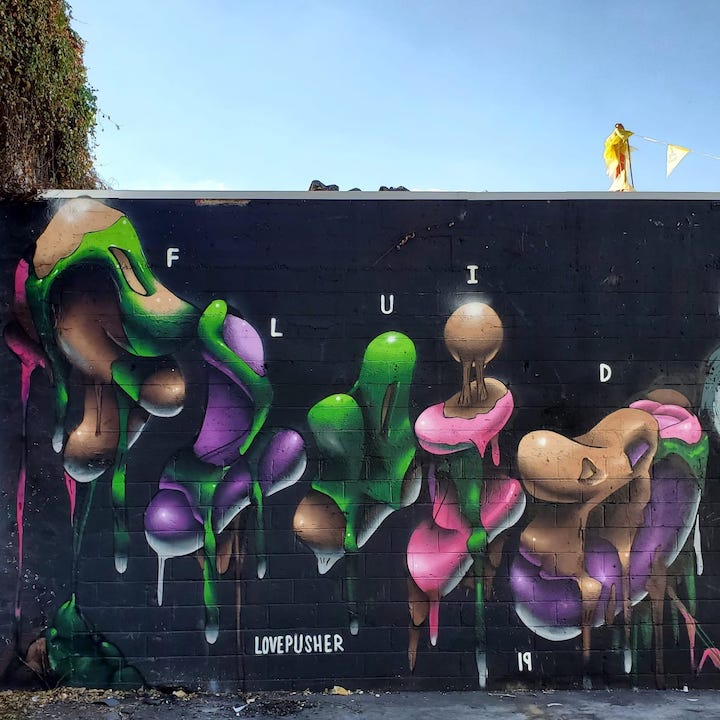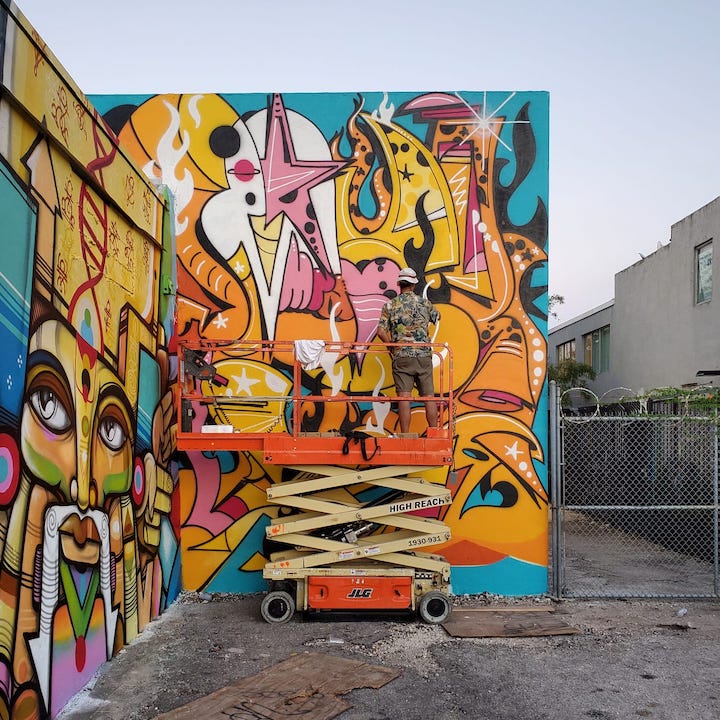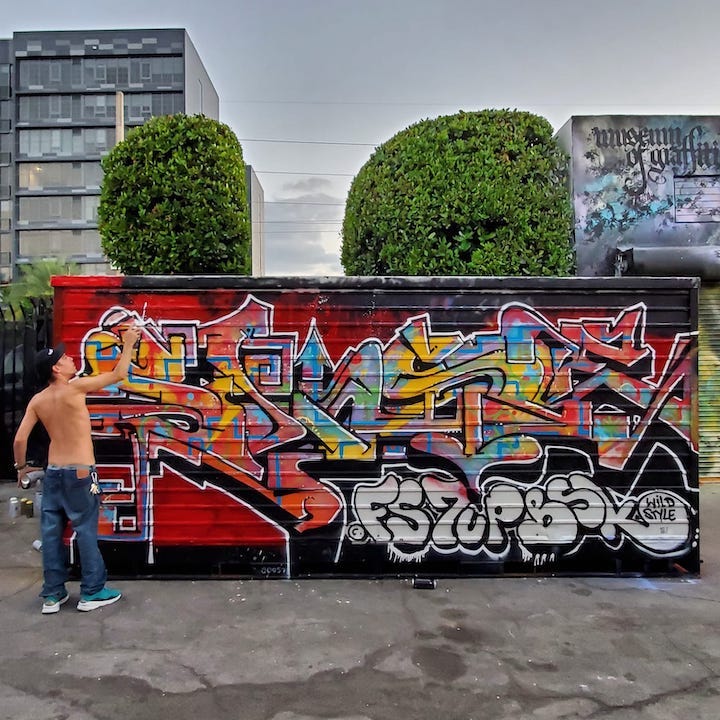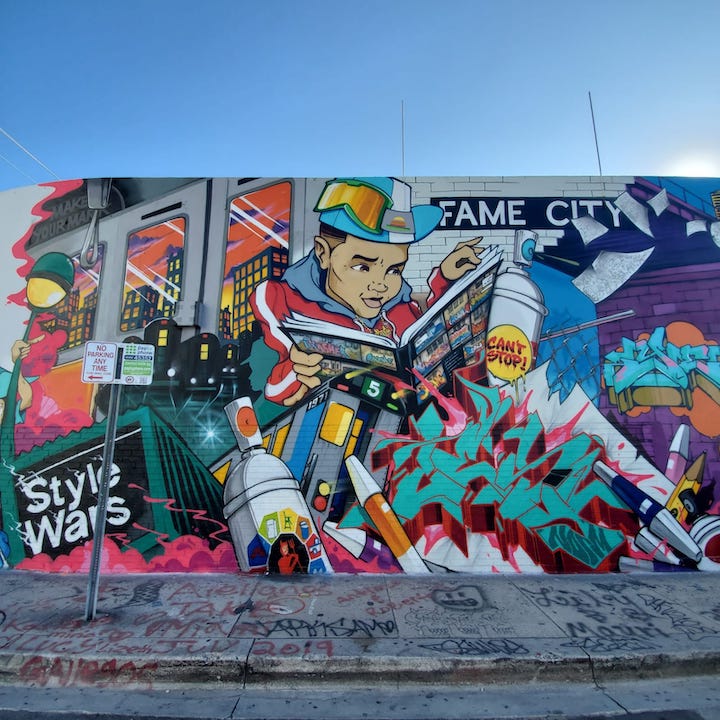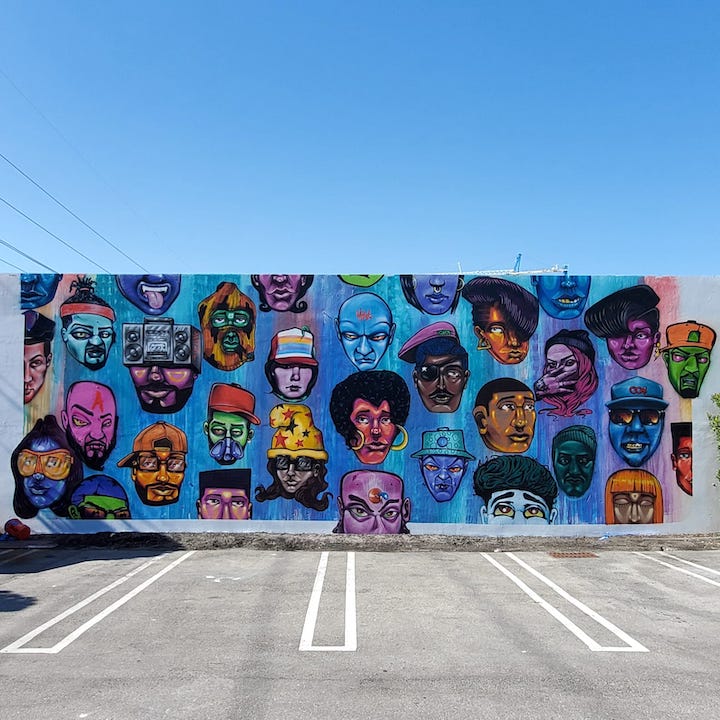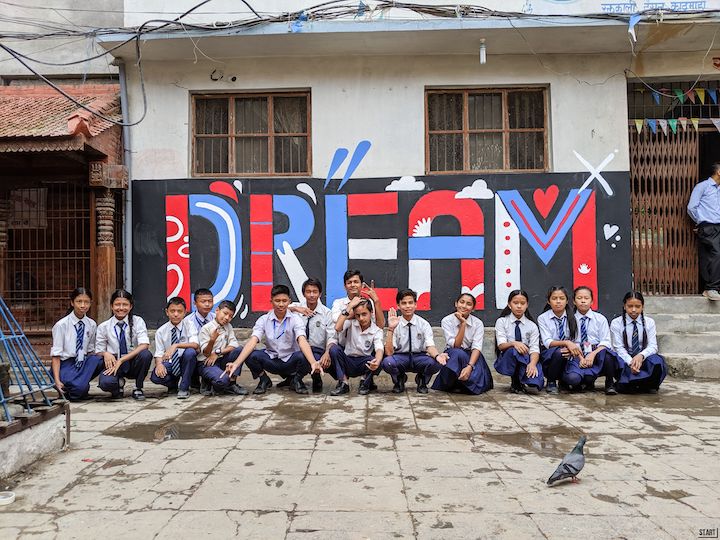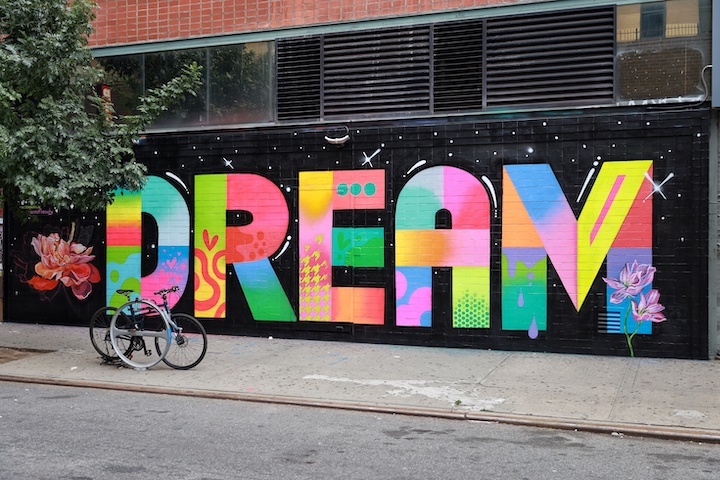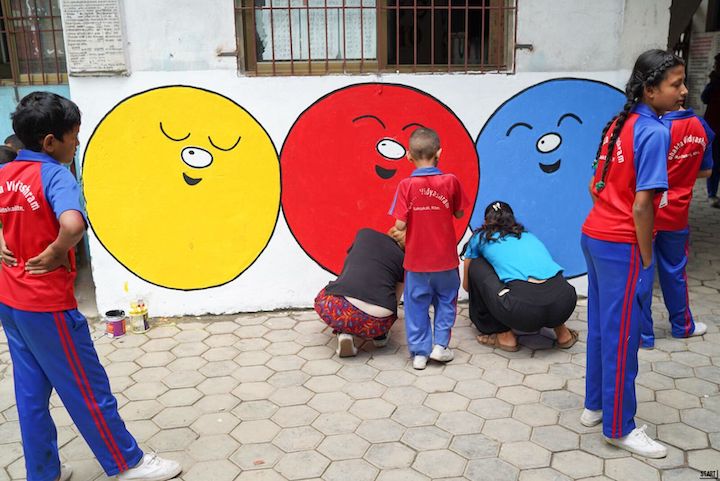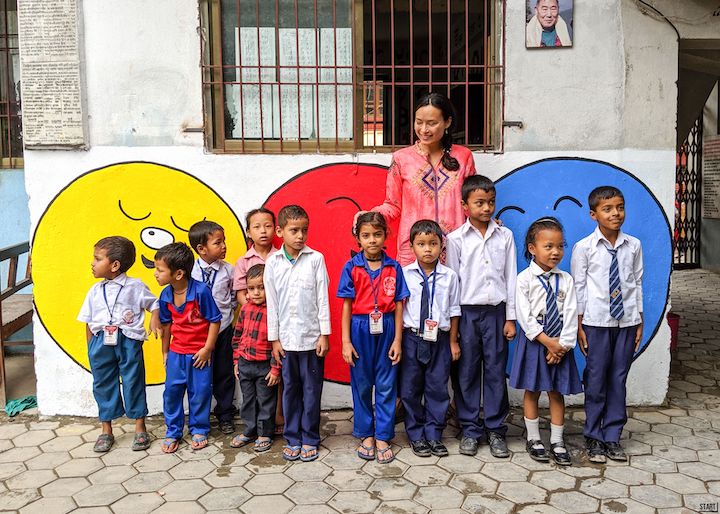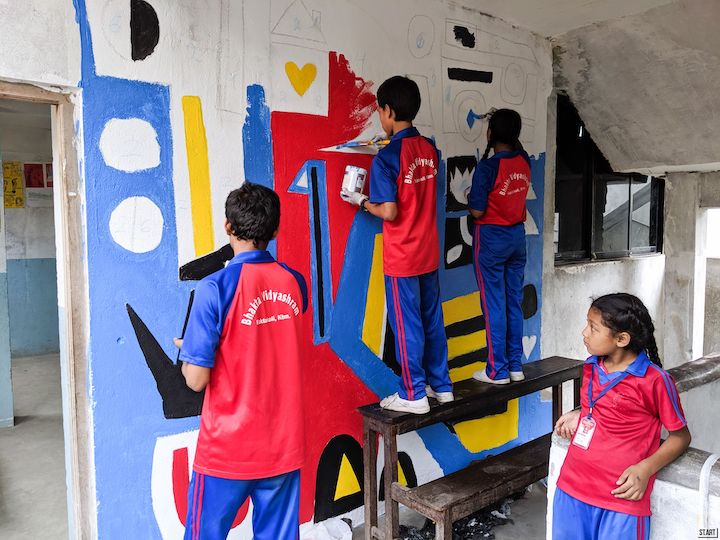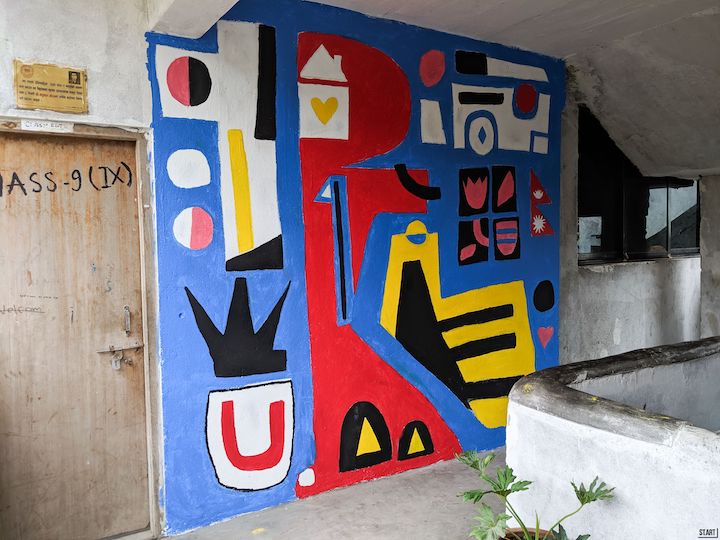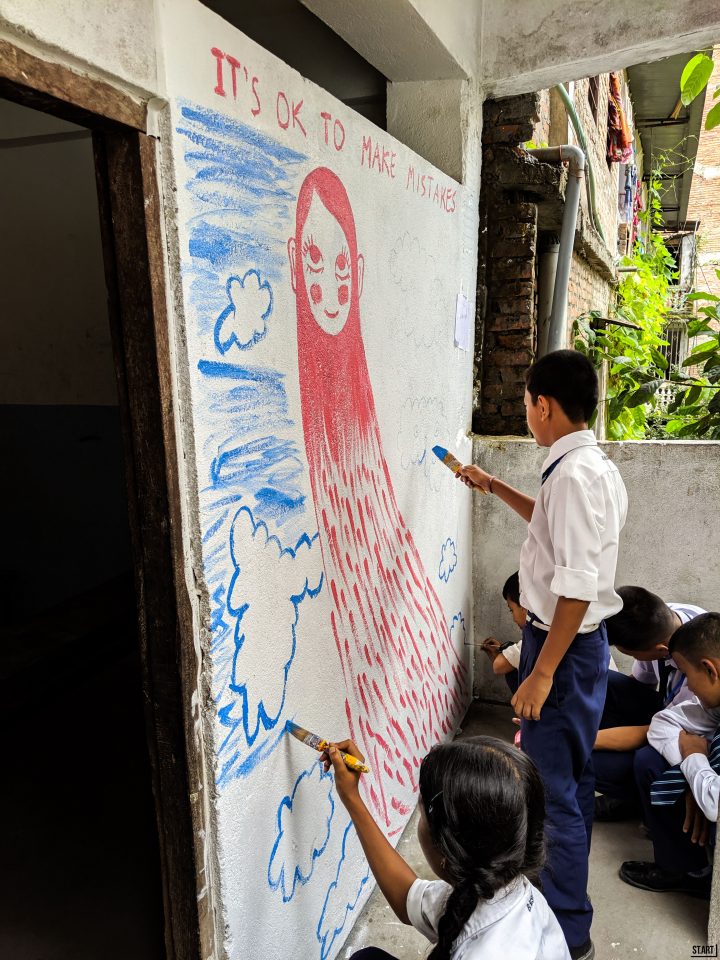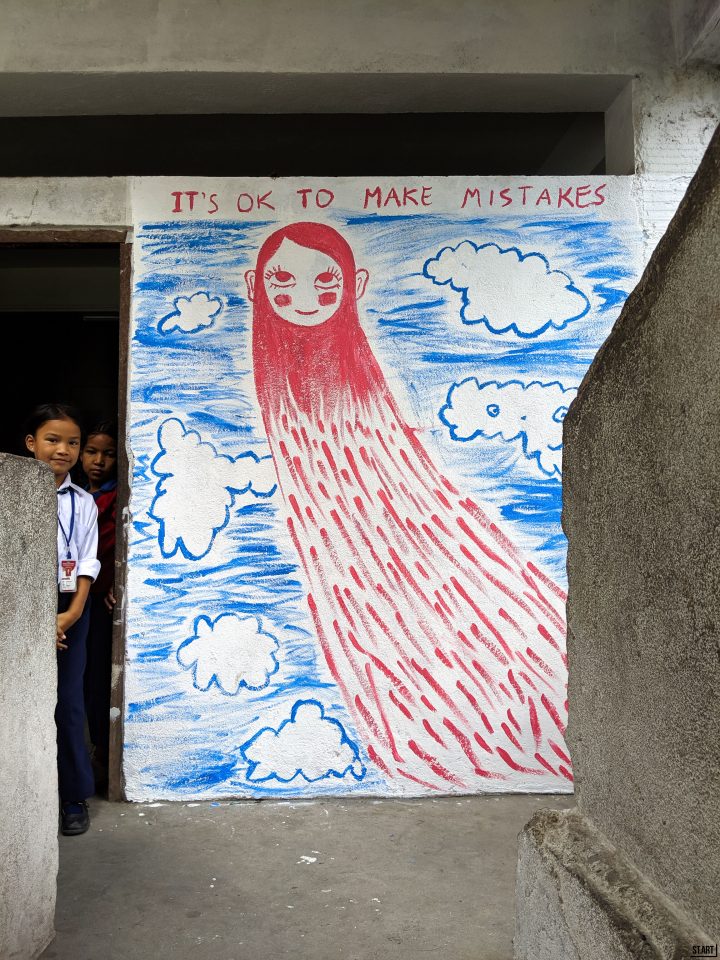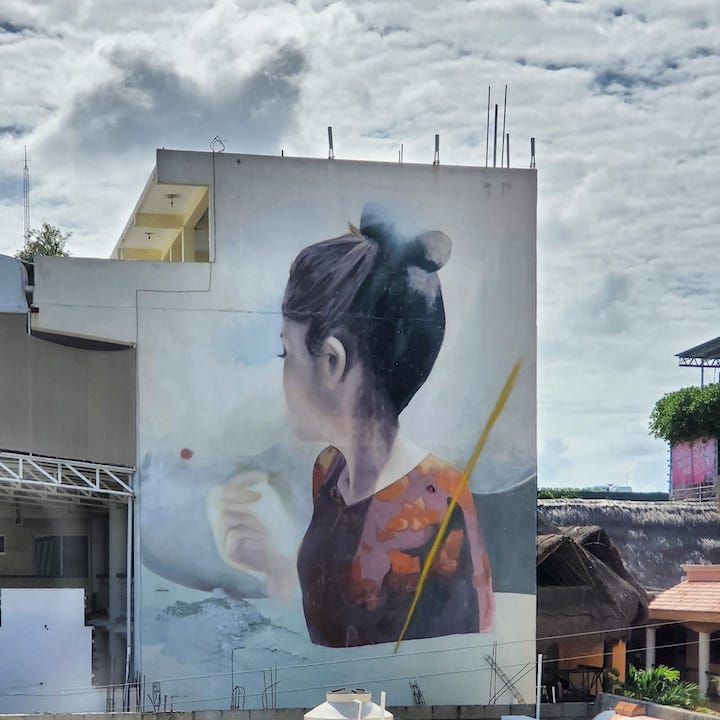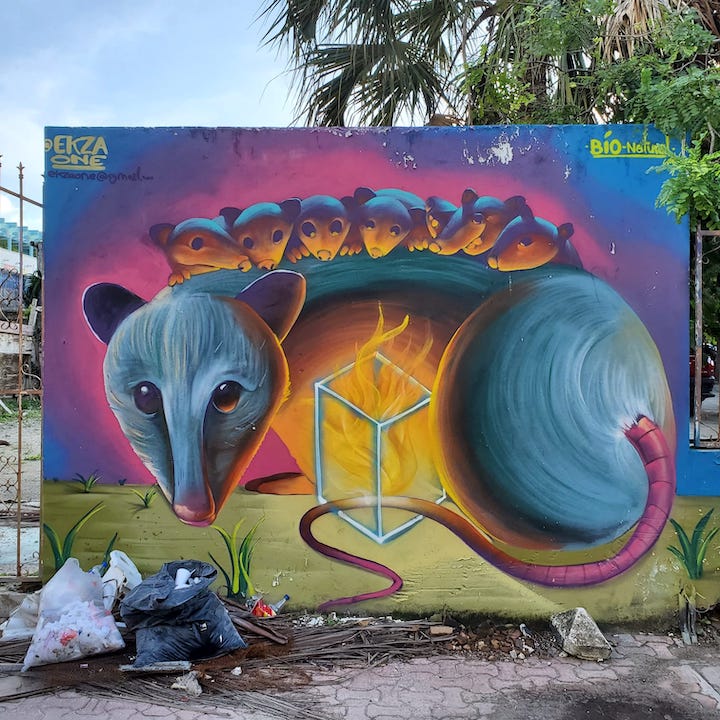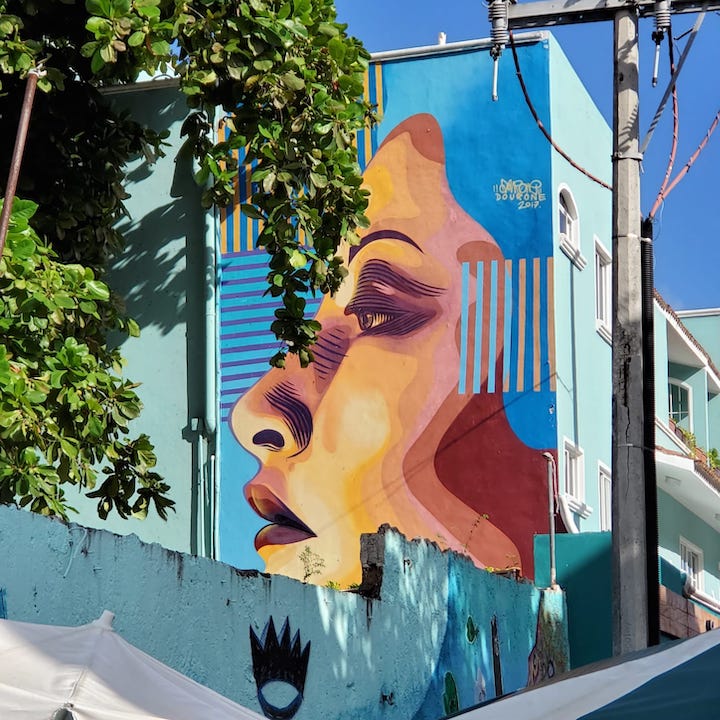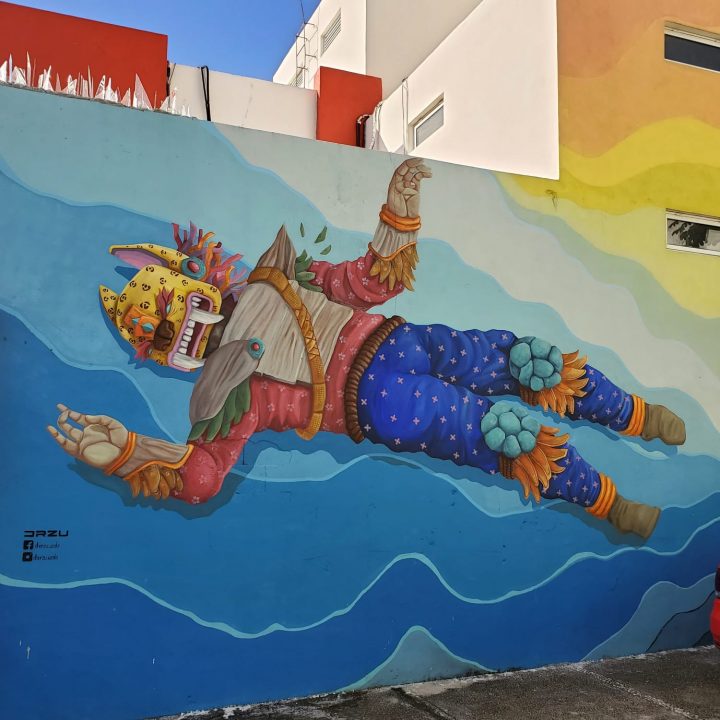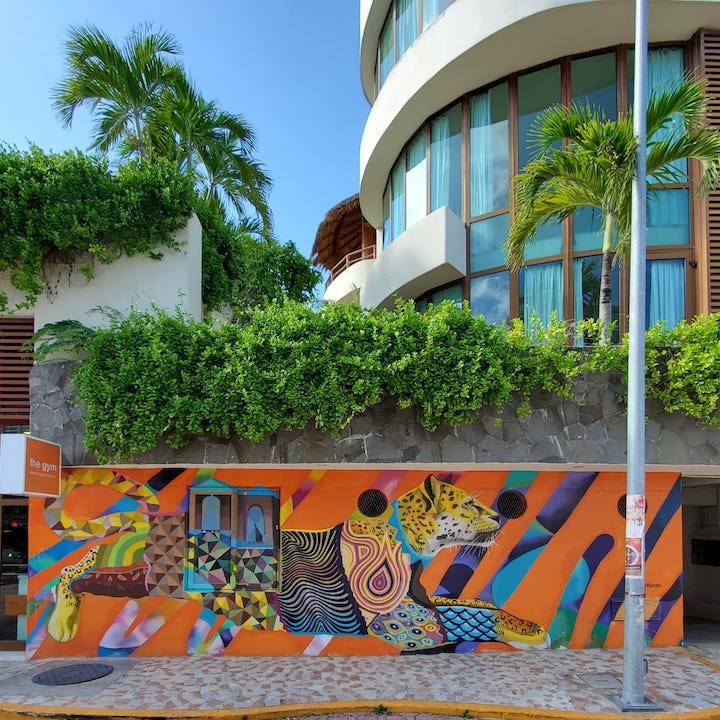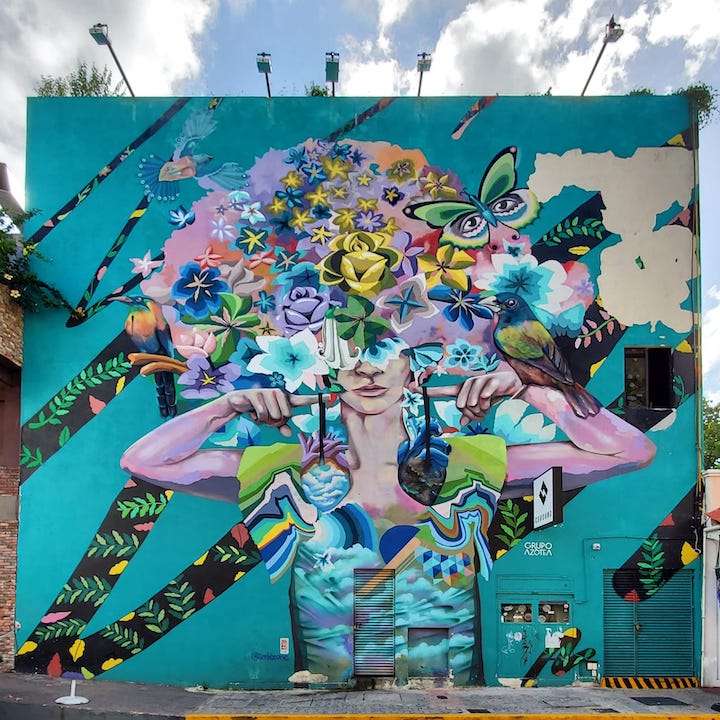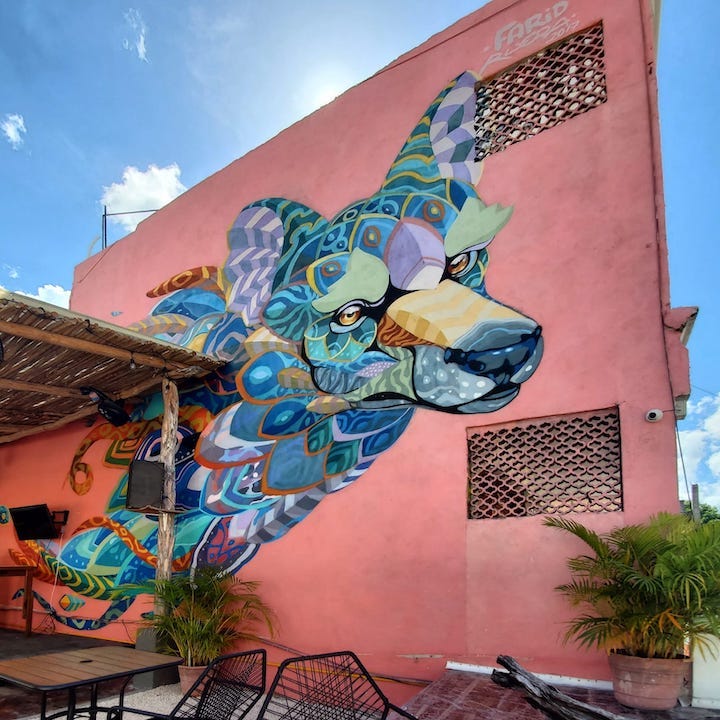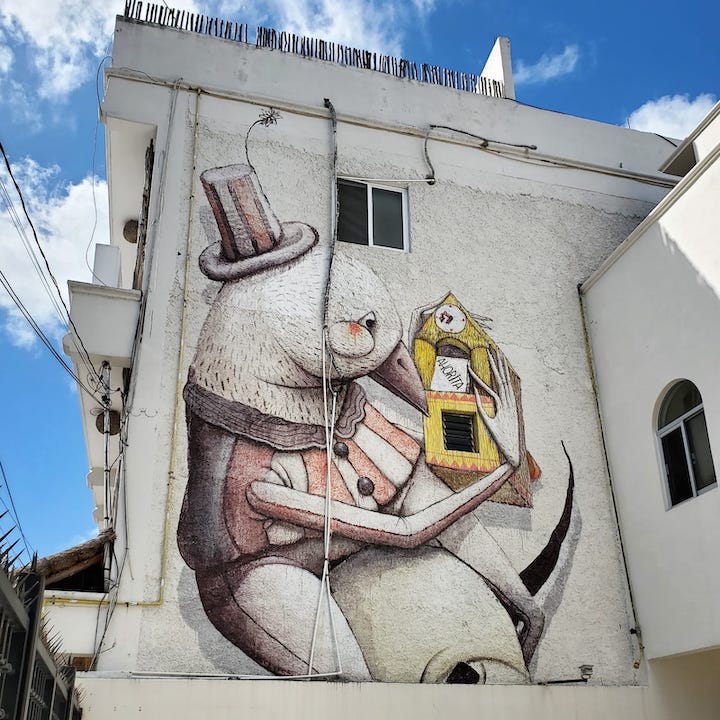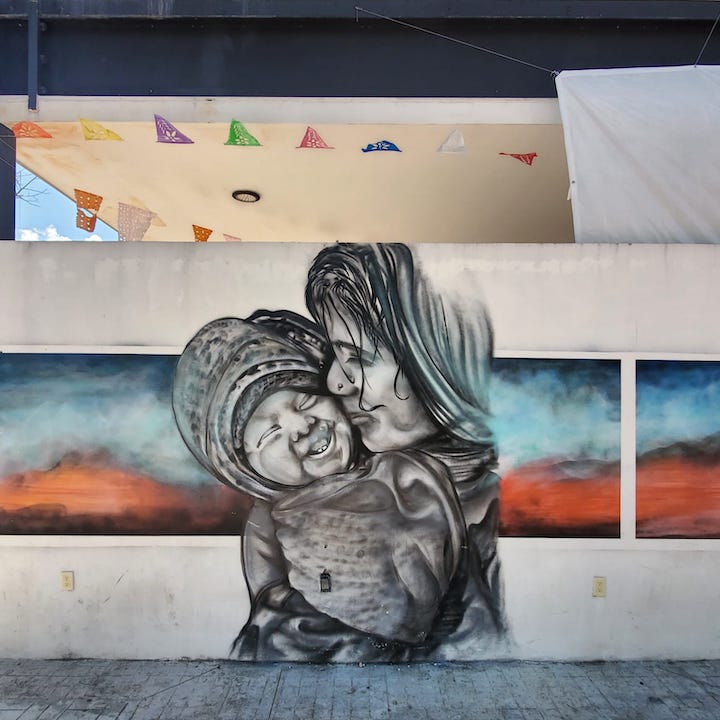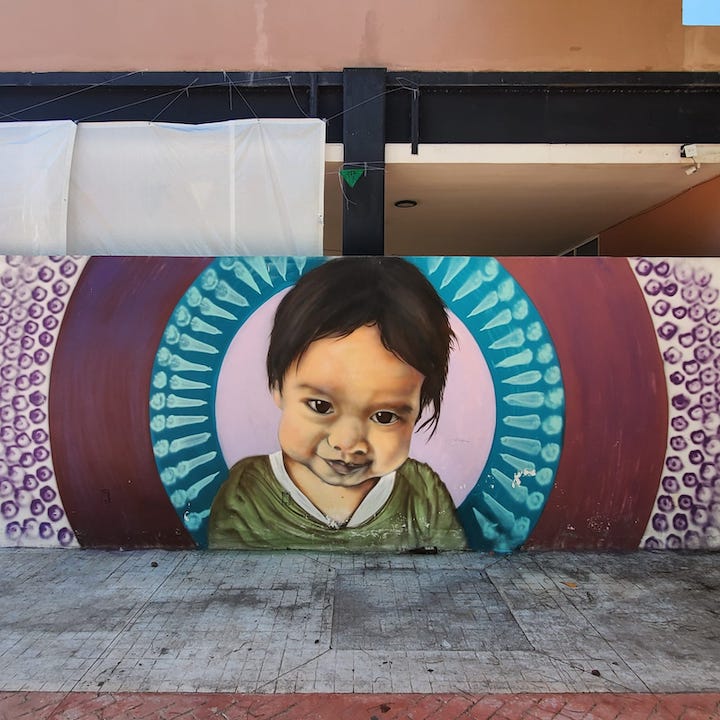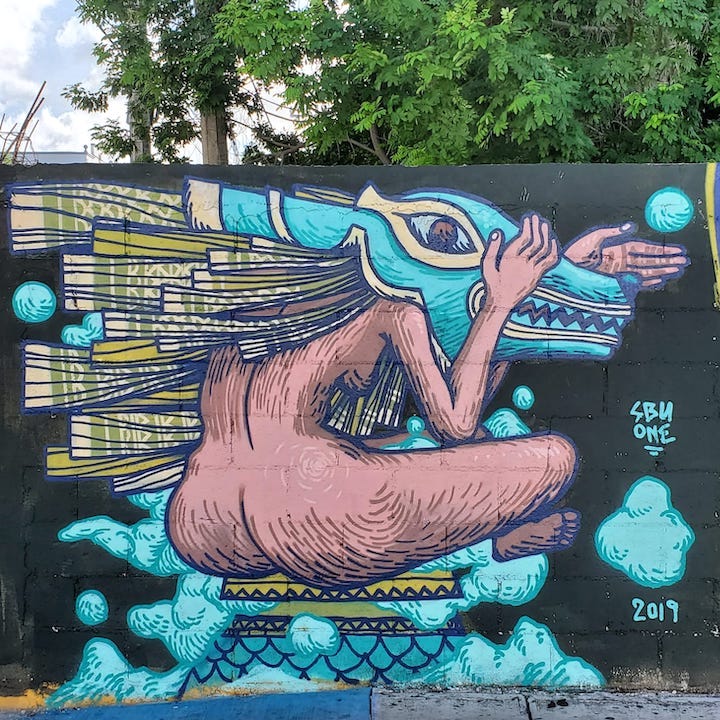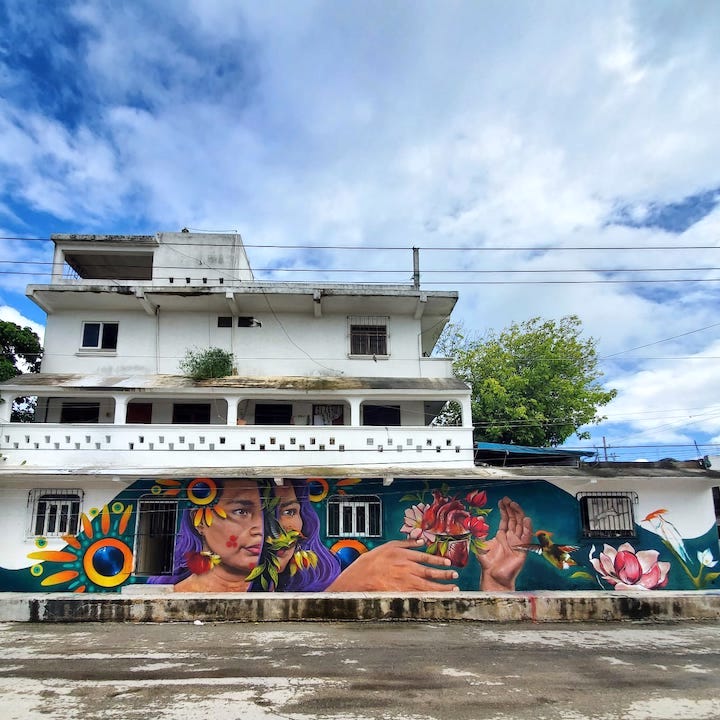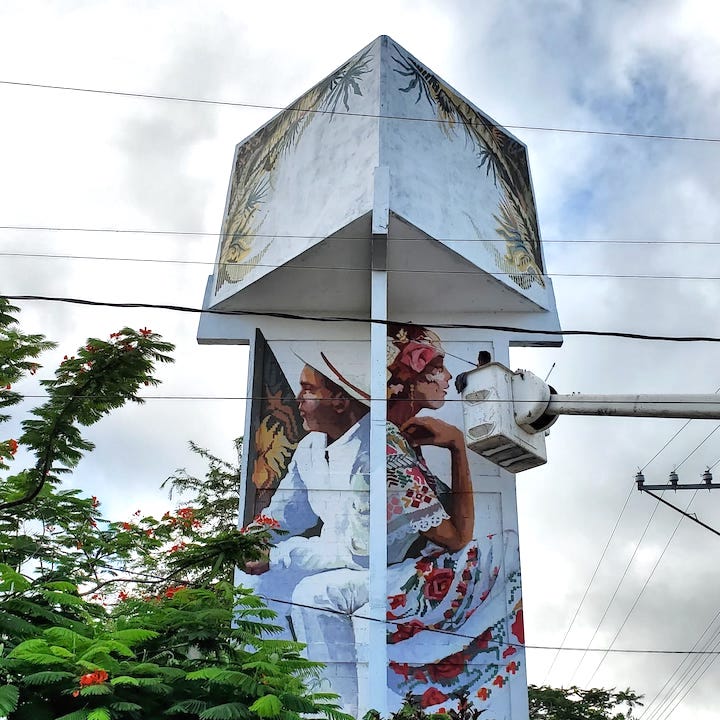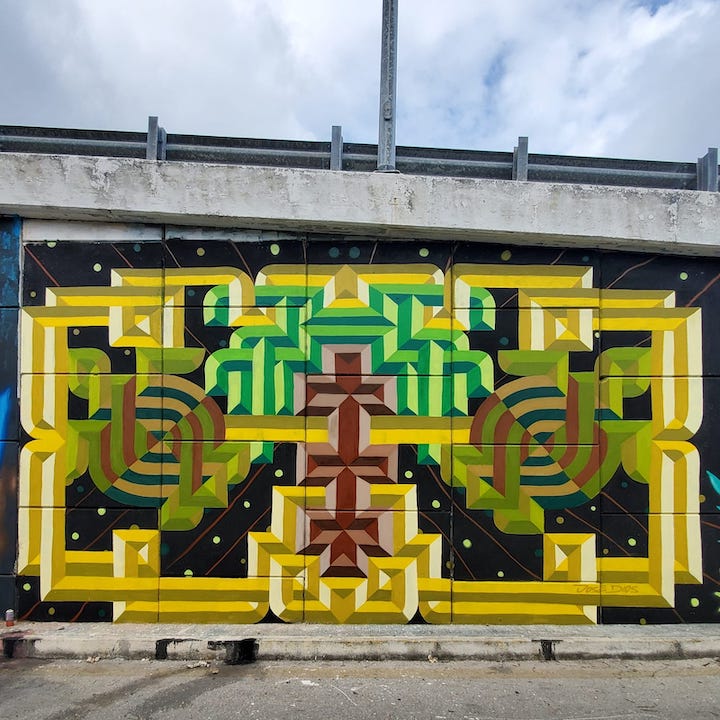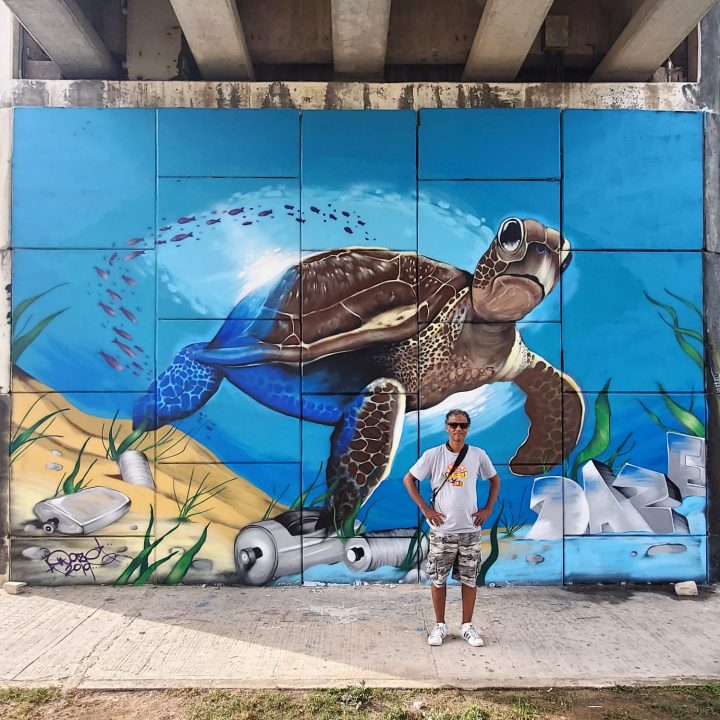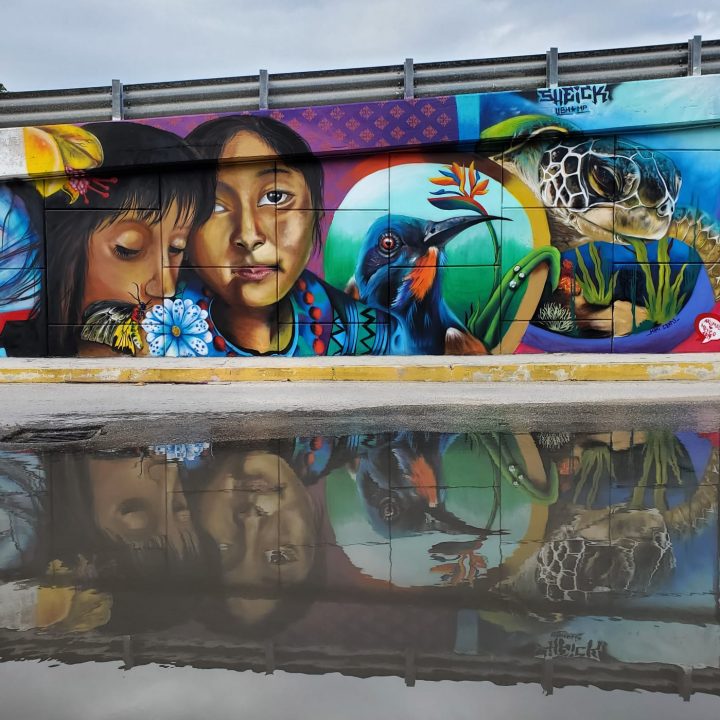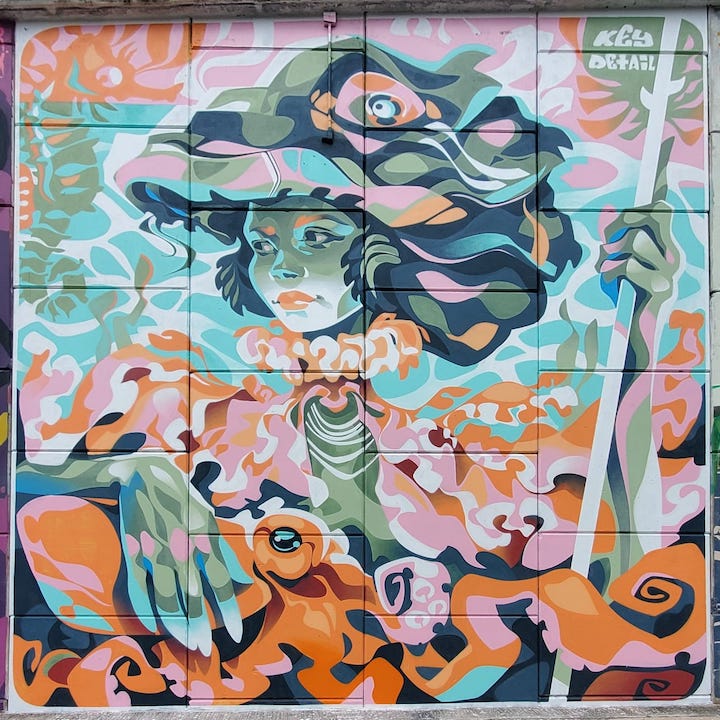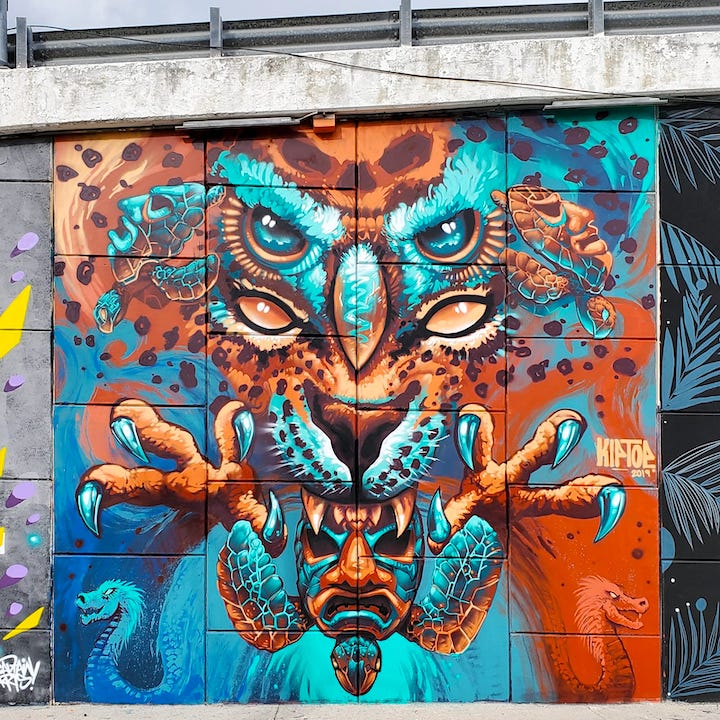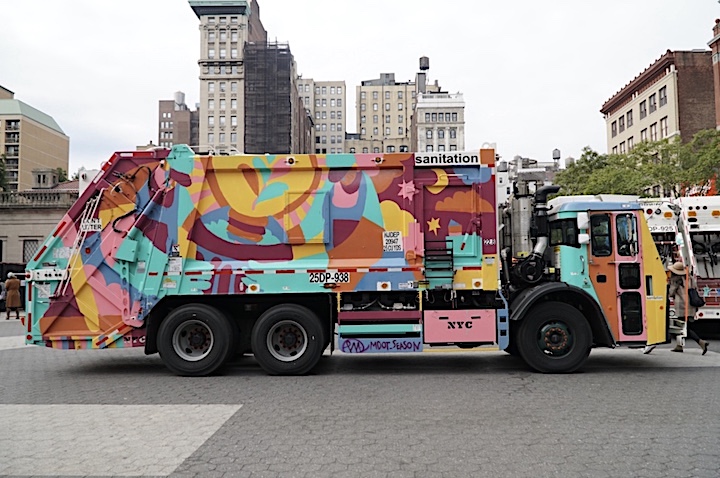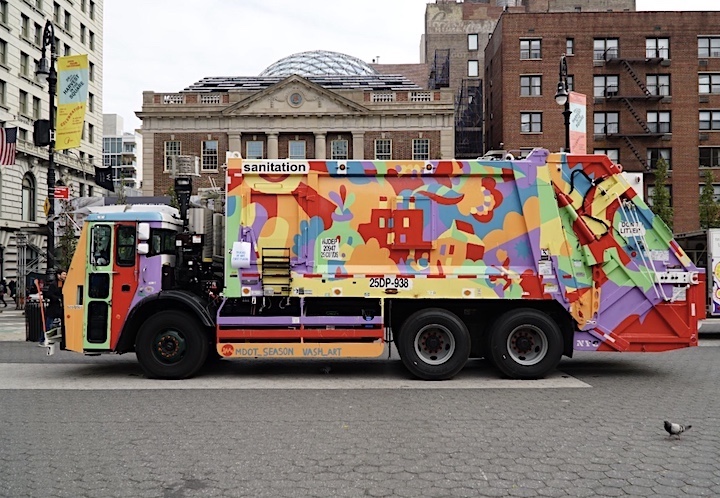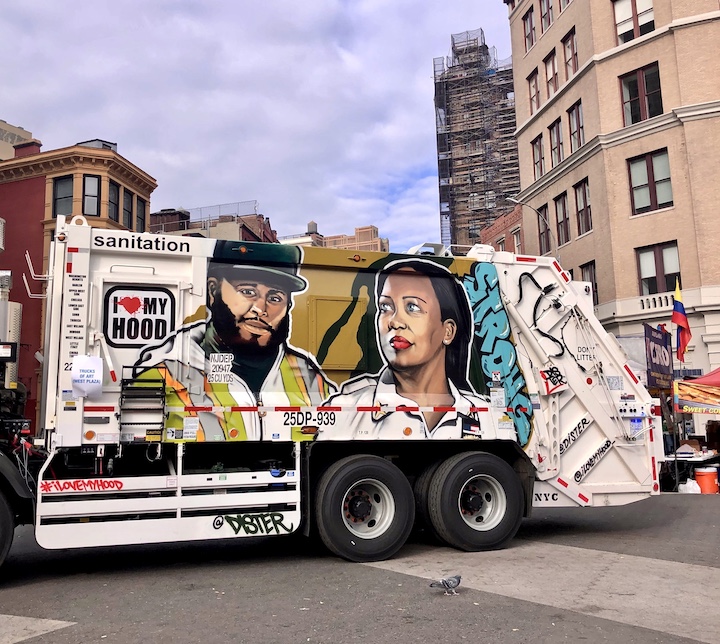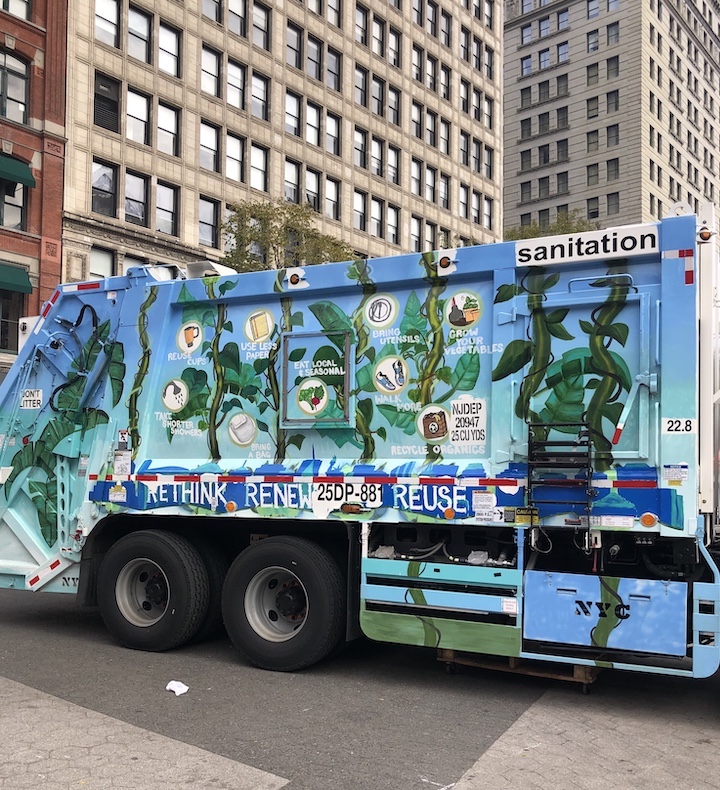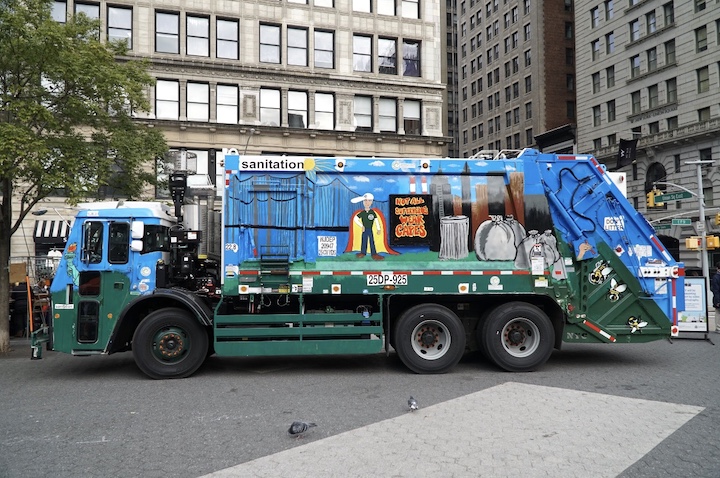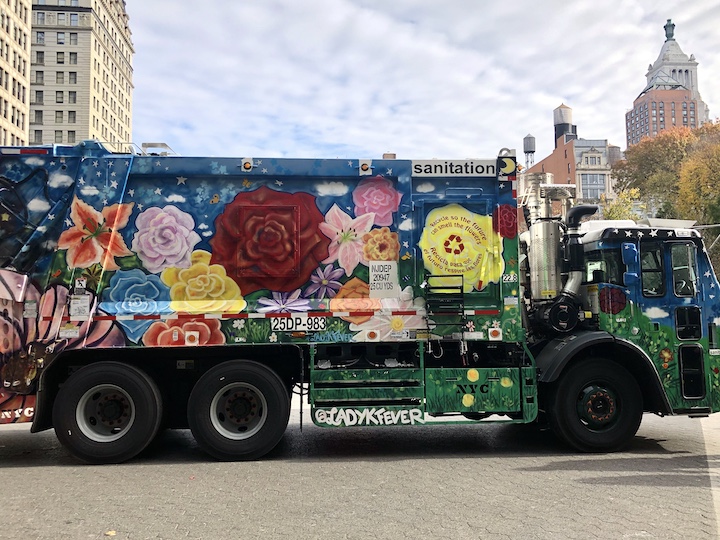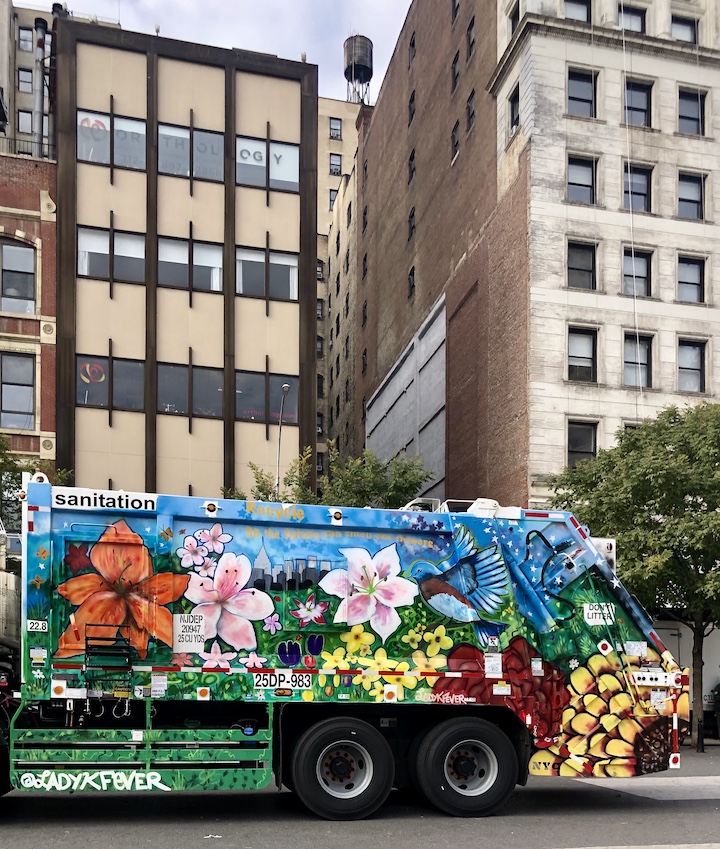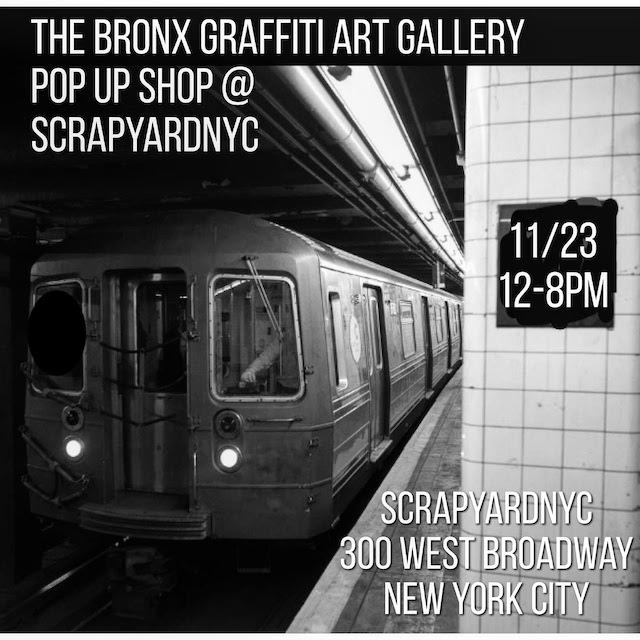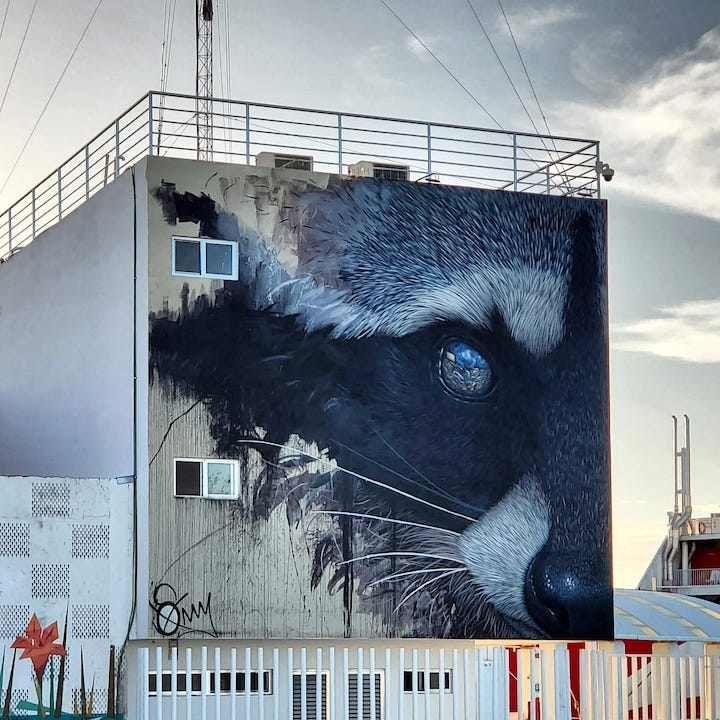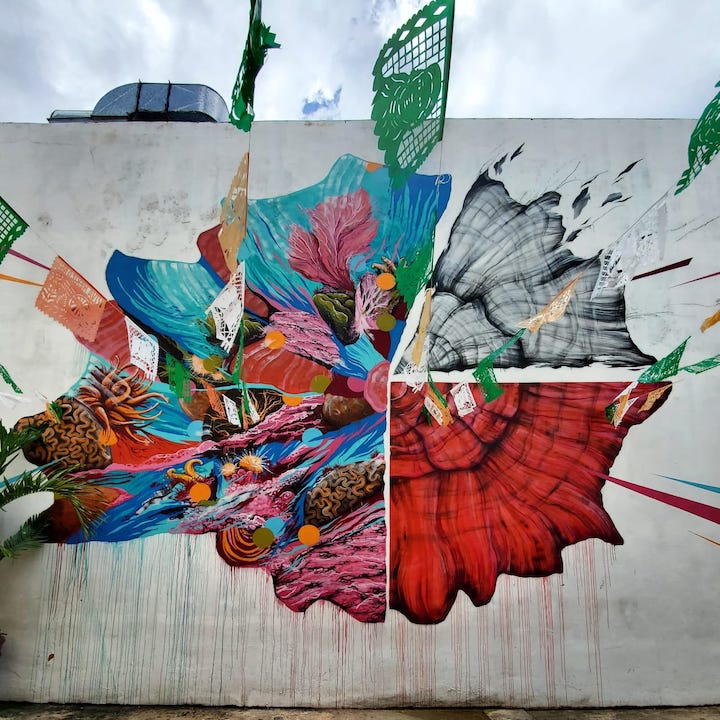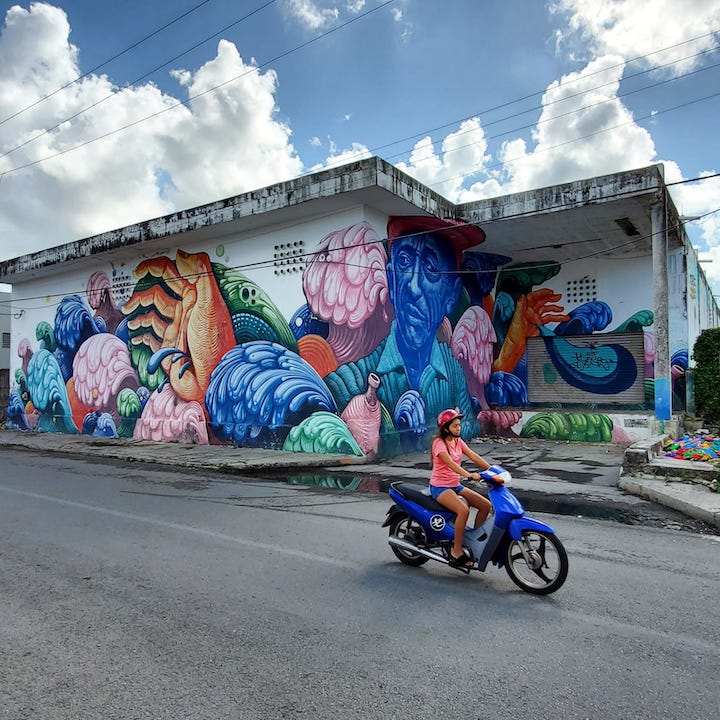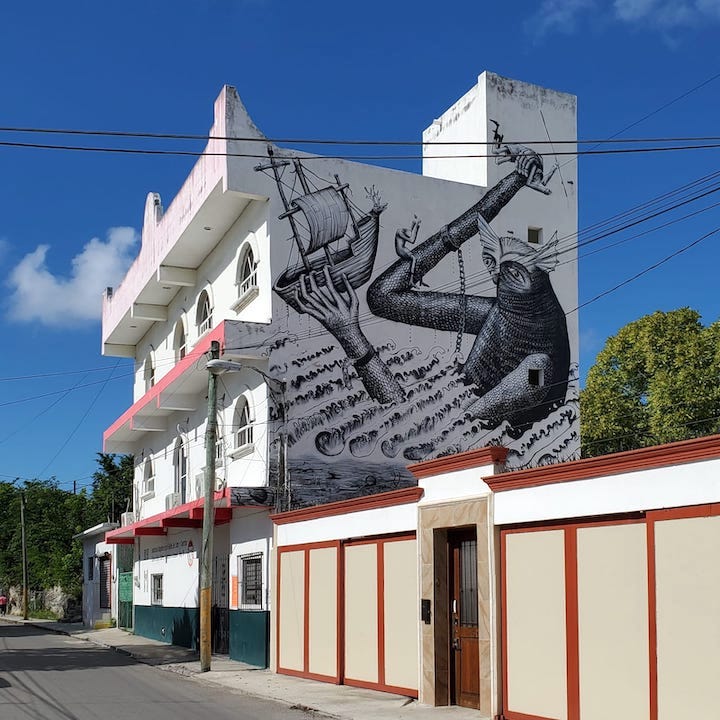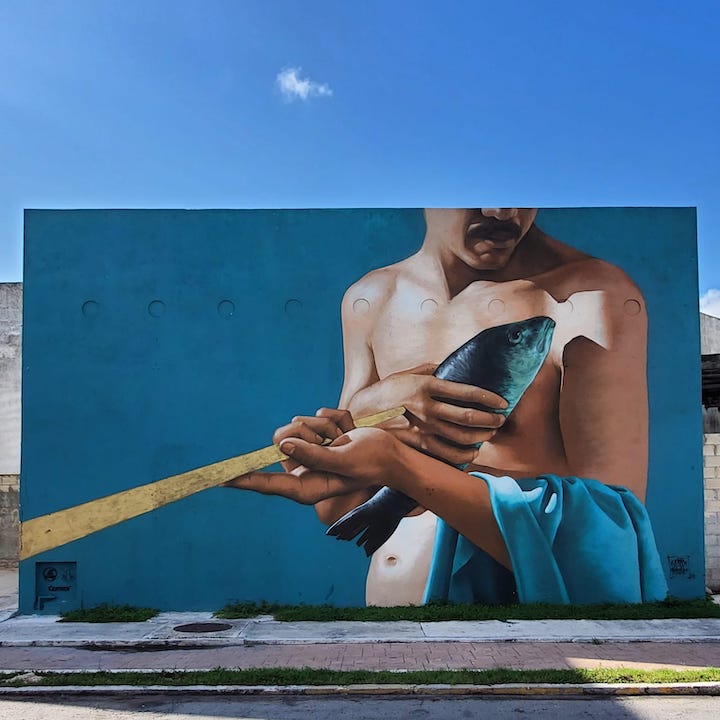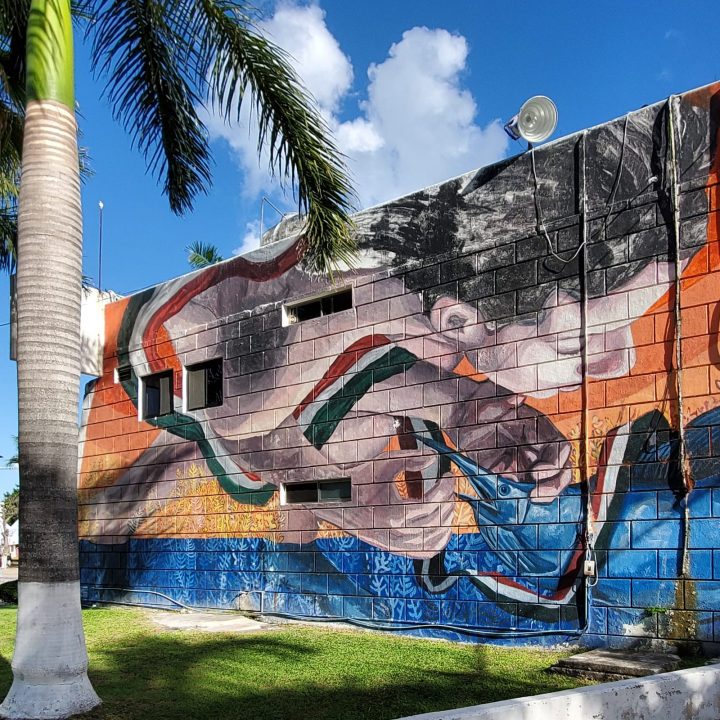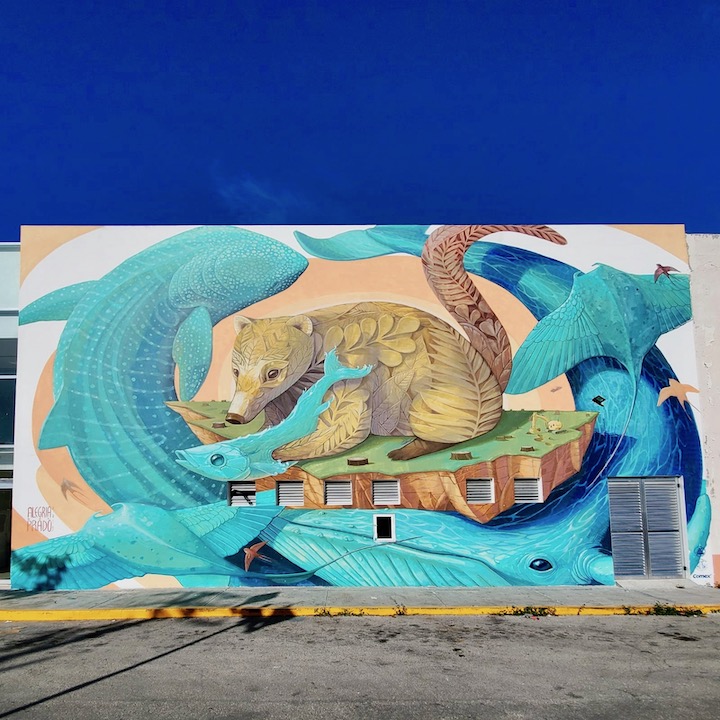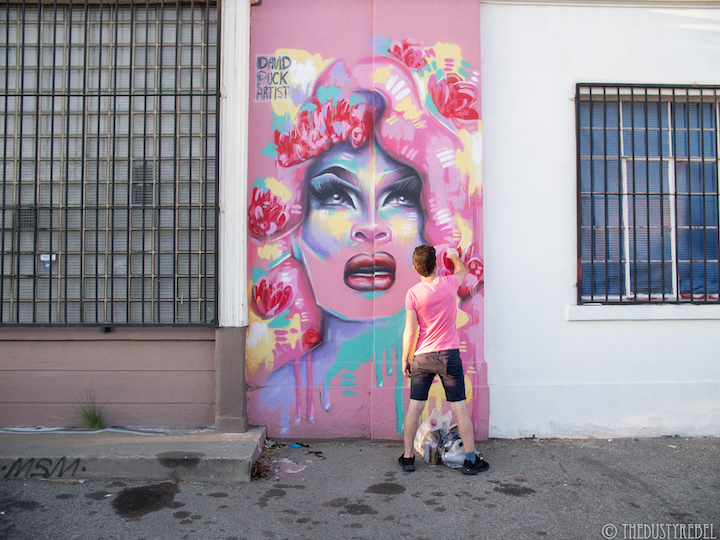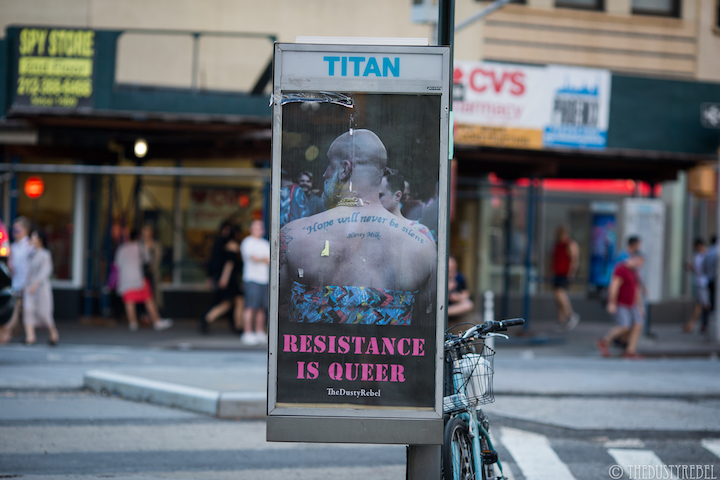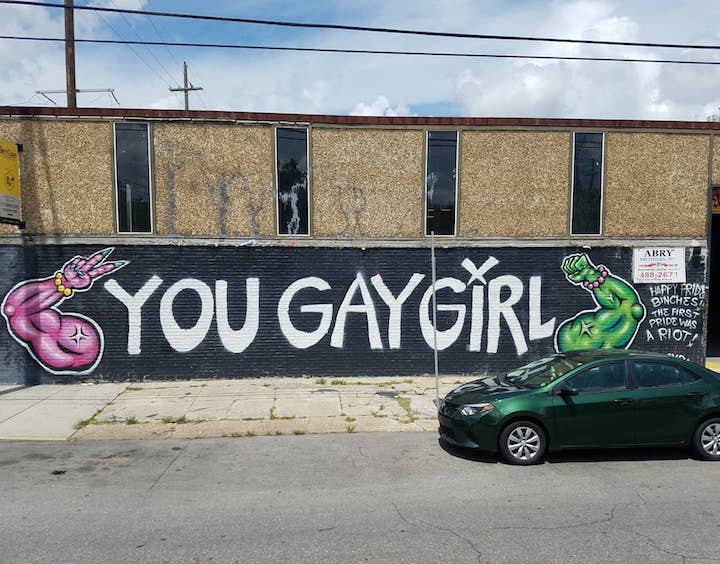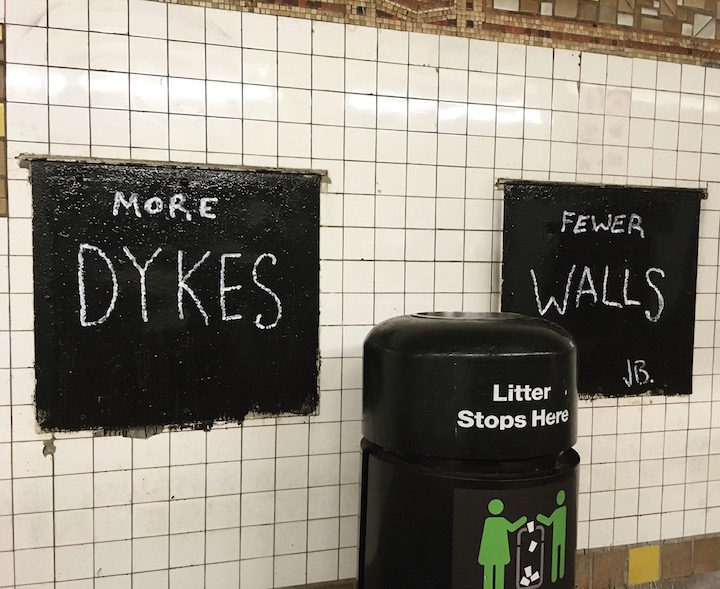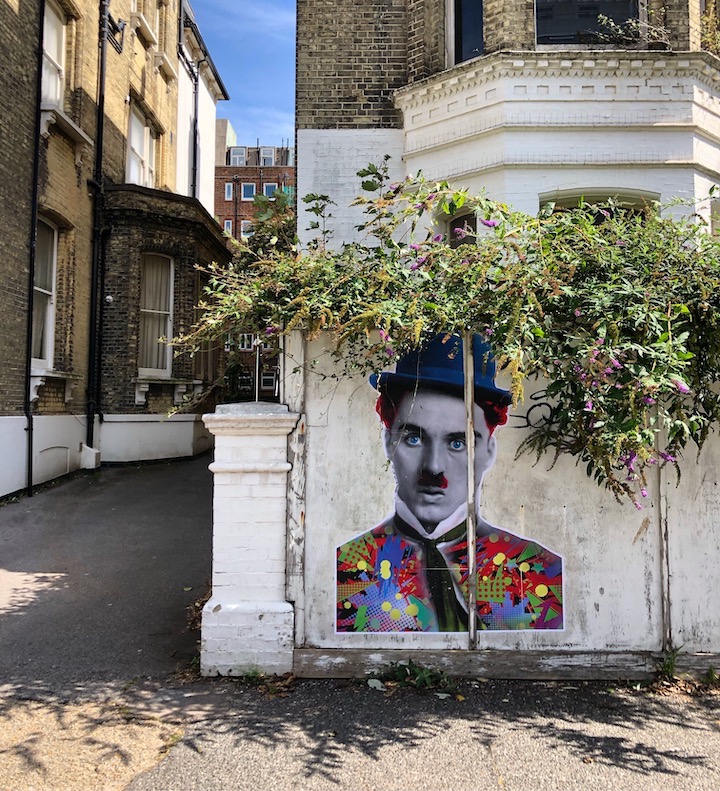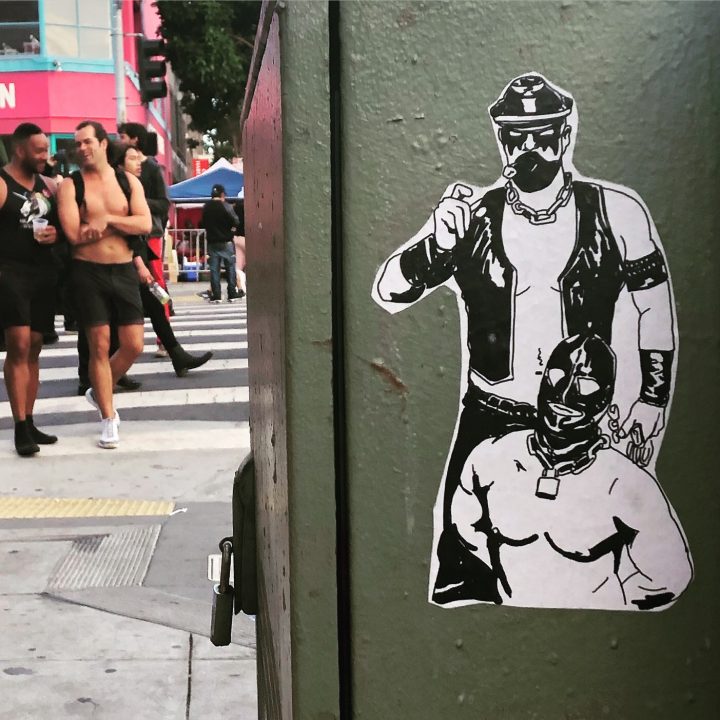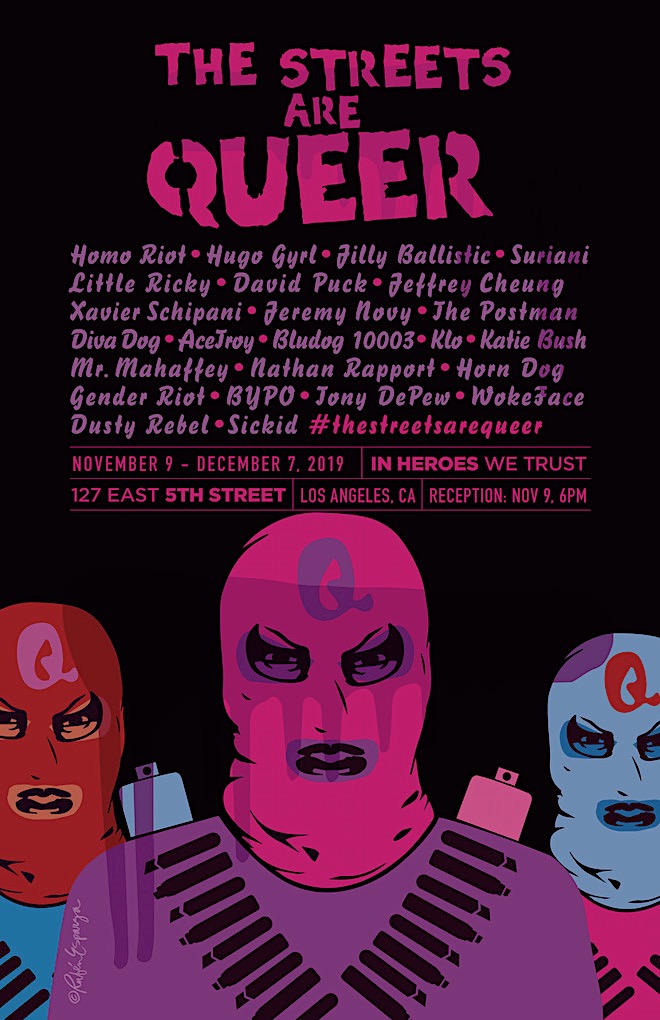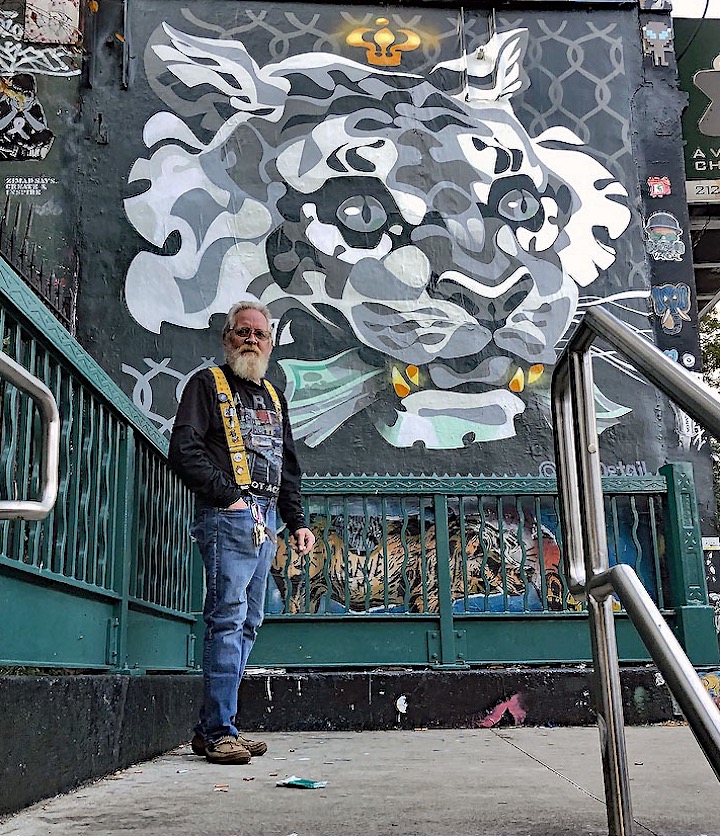
An art lover and dear friend to so many street artists, East Village–based Steve Stoppert is a local legend. True to his motto, “Just Paint,” he is the force behind one of NYC’s most visible public spaces – the wall facing the Second Avenue subway station. Dozens of artists have painted there, and dozens more wait their turn. Recently, we had the opportunity to interview Steve in his Second Avenue apartment that brims with art — from floor to ceiling — in just about every media and style.
We are fortunate that you have made New York City your home. Where were you born? And what brought you here?
I was born in Pontiac, Michigan — a northern suburb of Detroit. I came here in 1992 for two weeks to remodel my sister’s bathroom. And I never left. She was living on East 6th Street at the time.
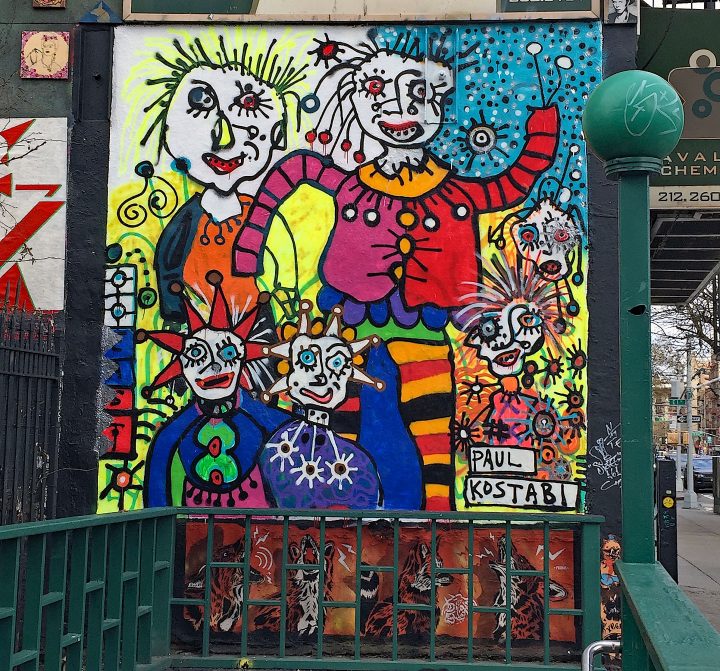
What was it about NYC that so drew you in?
The music scene. It was magic! Seeing the Pavement at the Mercury Lounge on the Lower East Side. Hanging out at CBGB on the Bowery…
And what about NYC’s art scene?
I used to go on my own to the Met. But it wasn’t until an artist friend took me on a tour of the museum and introduced me to Cézanne that something clicked!
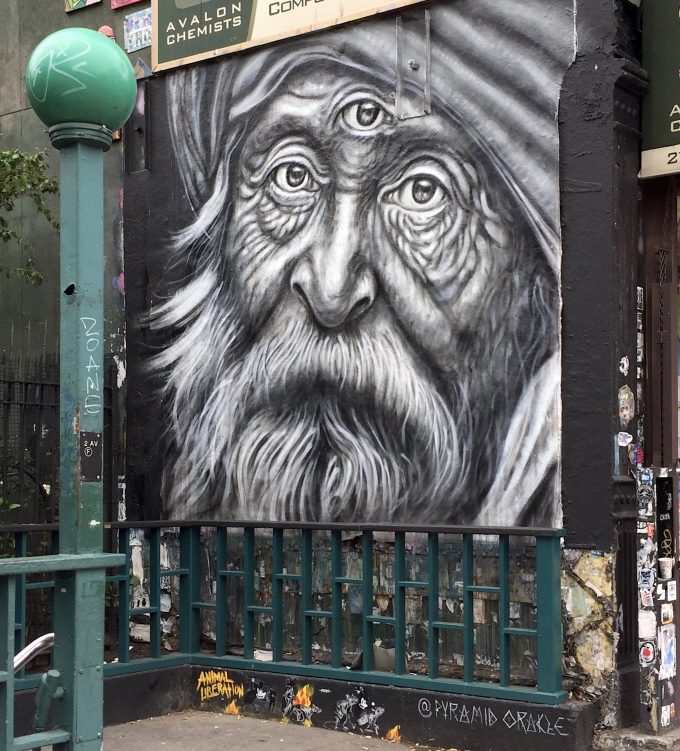
What is your first street art/graffiti-related memory?
Definitely Shepard Fairey. Seeing Andre the Giant everywhere!
And how did you become so deeply involved with the current scene?
I started going out with Fumero late at night. I was his “look-out.” I remember thinking, “If only I’d had an aerosol can in my hand when I was 15!”
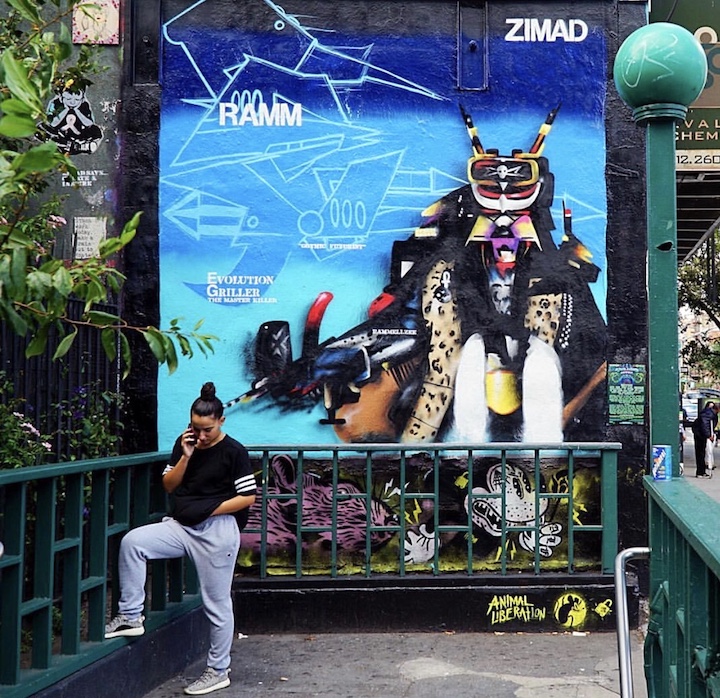
How has the street art scene changed since you first began paying attention to it?
It’s different. These days, there are lots of fluffy paste-ups, and just about everyone is documenting it. But I still love it.
What is your favorite aspect of the scene?
I love the hunt. When I first began in 2010, I was obsessed with Jim Joe. I used to hunt for him daily. I chased him everywhere between the Lower East Side and Tribeca competing with folks on Tumblr for the most Jim Joe sightings.
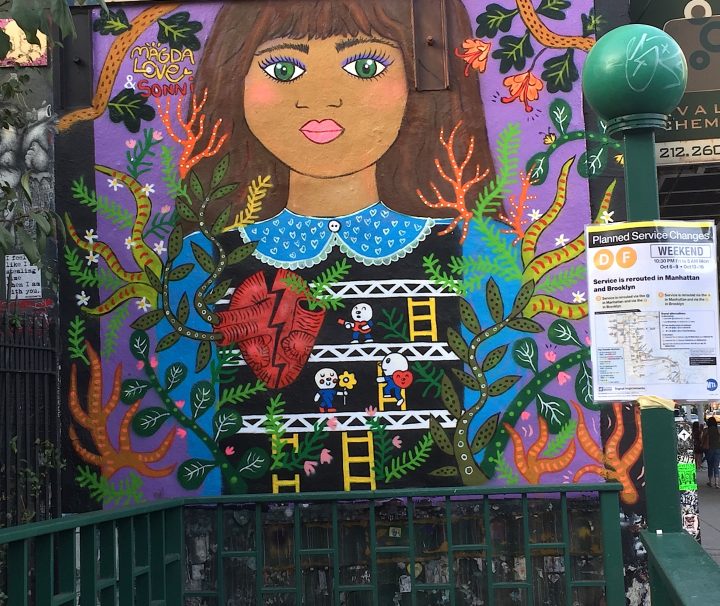
For the past several years you’ve been curating a hugely visible wall right on your block. How do you decide which artists to feature?
I have a list of about 80-100 artists who’ve approached me. We simply select a name at random from a hat. Each month the wall changes.
What has the experience been like?
I love it. I love working with artists. I don’t even mind when they’re flakey or late. I just go with it.
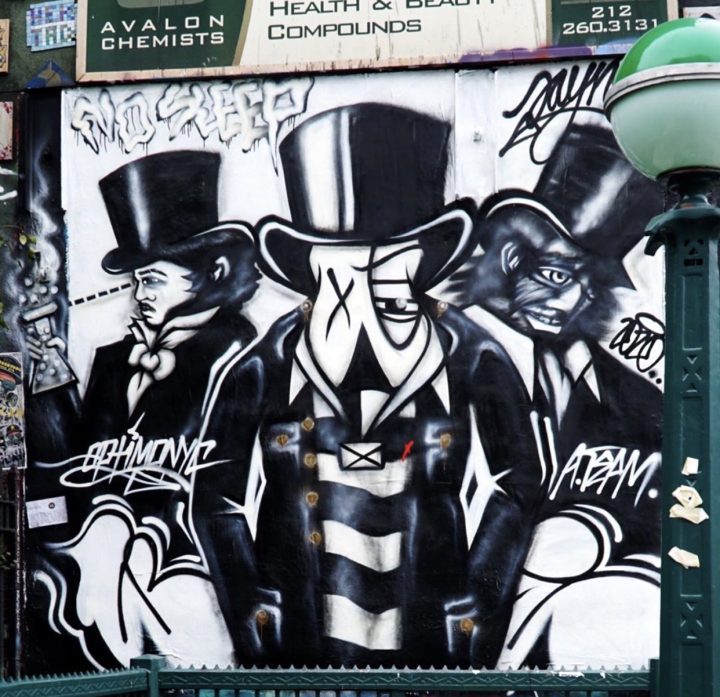
How do you deal with the ever-present politics in this scene?
I ignore it completely.
Do any memorable experiences stand out?
Fun times! When City Kitty got up on the wall and changed it 6-8 times within three months. And, of course, riding on my bike at 3am to 4am with flashlight and bike light – not knowing what I will see that I haven’t seen before.
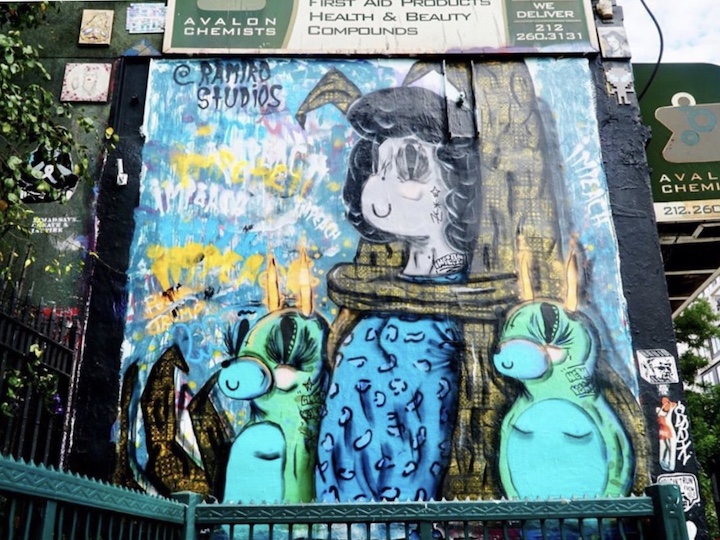
What do you see as the future of this scene?
It seems to be at an all-time high with its increasing appeal to commercial buildings and high-end hotels.
Yes! It certainly has changed since I first fell in love with it! And we are thrilled that you are doing what you are doing. The wall that you curate is one of our faves.
Images:
1. Steve Stoppert in front or wall painted last Sunday by Key Detail
2, Noted California-born artist and musician Paul Kostabi
3. The itinerant Sirus Fountain aka Pyramid Oracle
4. Bronx-based Zimad
5. Brooklyn-based Argentine artists Magda Love and Sonni
6. The prolific Optimo NYC aka Optimo Primo, Werds and No Sleep
7. Brooklyn-based Argentine artist Ramiro Davaro-Comas
Interview conducted by Lois Stavsky and Ana Candelaria and edited by Lois Stavsky
Photo credits: 1-3 & 5 Lois Stavsky; 4, 6 & 7 Ana Candelaria

